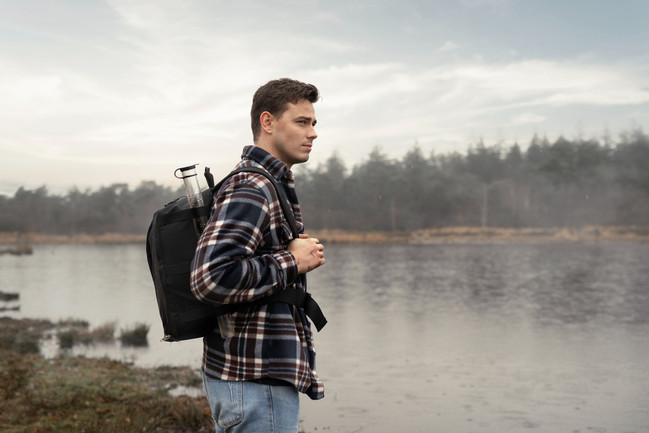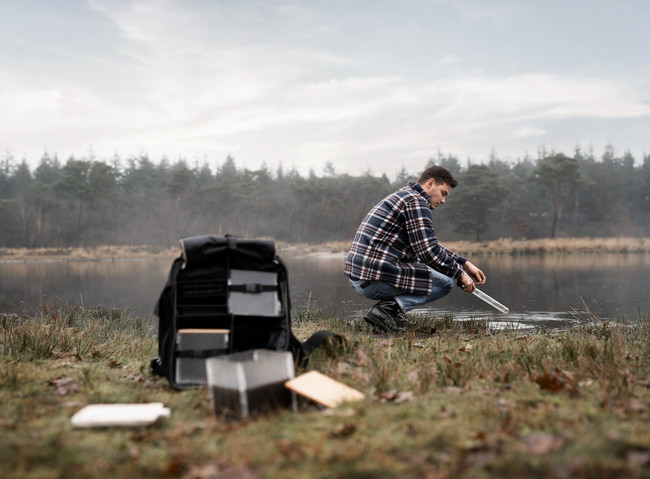The Mud Collecting Journey, solo project, initiated by Teresa van Dongen
The mud collecting journey focussed on the activity of inviting a non-human. It studied the process towards an artefact and a human-non-human relationship. By reflecting on the previous Life Centered Design projects, I was struck by the unrespectful activity of “inviting” a non-human, e.g. buying an organism online. This made me want to be involved in the project initiated by Biodesigner Teresa van Dongen. I aimed to create a toolkit for enhancing the sensitivity of inviting non-human stakeholders. The final artefact is a toolkit consisting of objects to support the mud collecting journey. The toolkit made by me includes a backpack, a digging tool plus cap, three mud boxes plus lids, a mud plate, three pieces of carbon felt (the minus pole), a cleaning towel, a mud training device, a boat (the plus pole), the mud meal, and a syringe.

The non-human actor of this project is an ecosystem, it focuses on the relationship between humans and the ecosystem inside muddy soils. The ecosystem is present to digest natural waste and clean the water. In its natural environment, the mud sediments are oxygen-free environments providing microbes like the electrochemically active bacteria Shewanella and Geobacter to thrive (Ktori, 2013). These bacterial species can couple oxidation of organic matter to a reduction of oxidised metals, this biological process, Dissimilatory Metal Reduction (DMR), can be coupled to energy conservation. Microorganisms that carry out DMR can also be used to generate electricity via Microbial Fuel Cells (MFC) (Shi et al., 2009). Energy generated MFC can be realised by connecting an anode of grown bacteria to an electrode, e.g. a carbon felt sheet, to a cathode.



